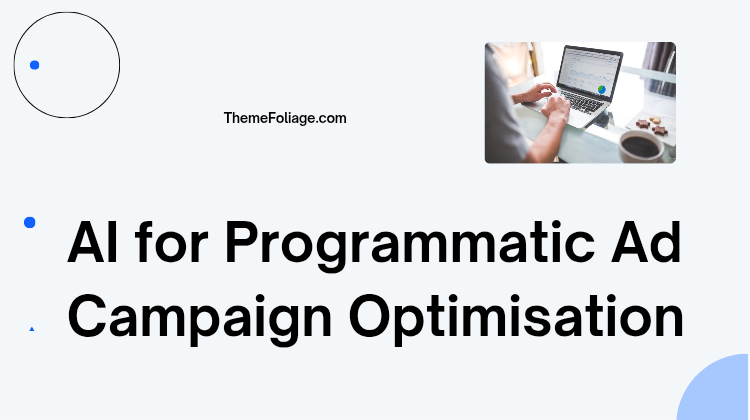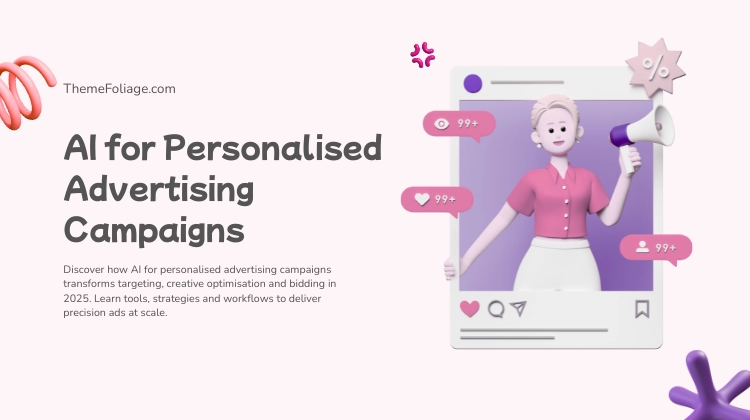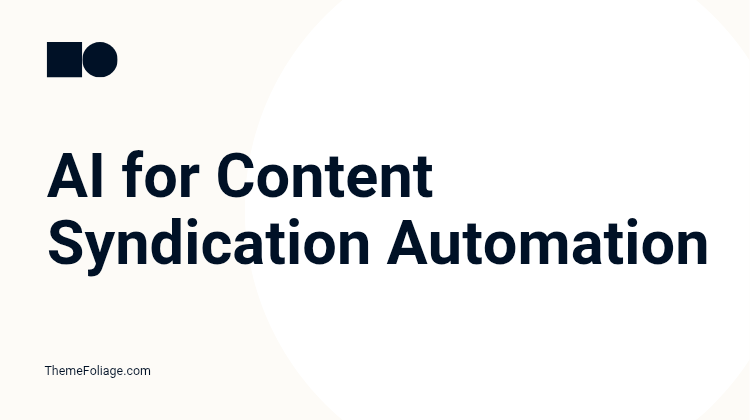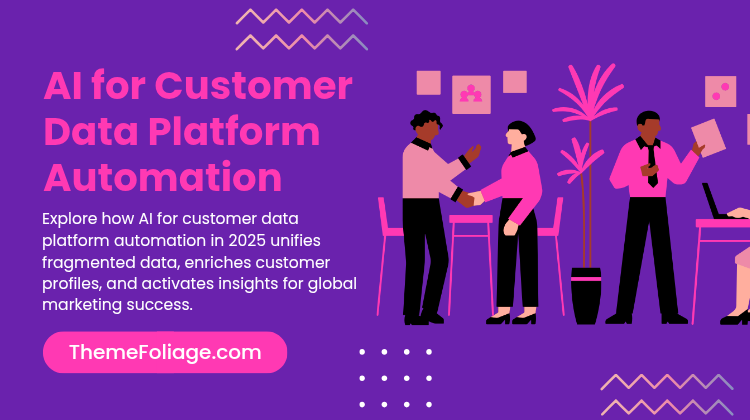Programmatic advertising in 2025 is not about manually setting bids or swapping creatives, it’s about deploying AI systems that optimise budgets, adapt creative, and target audiences automatically, minute by minute.
Modern AI-driven programmatic platforms ingest live performance data and external signals to adjust bids, allocate spend across channels and serve personalised ads that maximise return on ad spend (ROAS).
By closing the loop on bidding, creative and audience insights, AI turns paid media into a continuously learning growth engine.
This guide explains why AI is revolutionising programmatic, outlines core capabilities, practical use cases, recommended tools (verify pricing before purchase), a phased implementation roadmap, measurement strategies, governance and common pitfalls to avoid.
Why AI Matters for Programmatic in 2025
- Manual bid rules can’t keep pace with real-time auction dynamics and fragmentation across DSPs.
- AI predicts conversion value per impression, enabling profit-first bid calculations rather than cost-first metrics.
- Dynamic creative optimisation serves the right message to each user segment based on live intent signals.
- Cross-channel budget allocation shifts spend to the highest-performing inventory automatically.
- AI-driven audience expansion discovers lookalikes and micro-segments with the best ROI.
- Fraud detection and brand safety models reduce wasted spend and protect reputation.
When set up properly, AI transforms programmatic from a cost centre into a scalable, self-optimising investment.
Core AI Capabilities for Paid Media Automation
- Real-Time Bidding (RTB) Optimisation: Machine learning models calculate bid price per impression based on predicted user value and auction dynamics.
- Dynamic Creative Optimisation (DCO): Personalised ad variants assemble headlines, images, calls-to-action and offers on the fly to boost engagement.
- Budget Allocation Engine: Reinforcement learning rebalances budgets across channels (display, video, native, CTV, social) to maximise incremental ROI.
- Predictive Audience Segmentation: AI clusters high-value audiences and expands reach with lookalike modelling.
- Fraud & Brand Safety Filtering: Real-time detection of invalid traffic, viewability issues and unsafe inventory.
- Performance Forecasting: Models predict daily and weekly spend-to-conversion curves to align targets with expected outcomes.
- Signal Enrichment: Incorporate external data, weather, sports scores, macroeconomic indicators, to adjust campaigns for contextual relevance.
These capabilities let marketers deploy TCPA like automation at scale across hundreds of campaigns and creative variants.
High-Impact Use Cases
- Cross-Channel Prospecting: AI allocates budget and creative across display, native, social and connected TV to find new audiences at target CPA.
- Retargeting Journeys: Dynamic remarketing ads adapt offers and messaging based on user behaviour stages, browsing, cart, partial checkout.
- Seasonal & Flash Sale Pushes: Auto-scale high-intent audiences during peak shopping windows and throttle spend when CPA rises.
- Geo-Aware Local Campaigns: Adjust bids and messaging per city or region using live footfall, weather or event signals.
- App Install & Engagement: Predictive bids target high-LTV mobile users with creative variants personalised to device, OS and session patterns.
- Video Completion Optimisation: Balance view-through rates and downstream conversions by optimising to mid-roll engagement signals.
- Incremental Lift Testing: Use AI holdouts within DSPs to measure true incremental impact of programmatic spend on offline or cross-channel conversions.
Recommended Tools and Platforms
| Category | Examples |
|---|---|
| DSP / RTB Platforms | The Trade Desk; Google DV360; Adobe Advertising Cloud |
| Dynamic Creative | AdRoll; Celtra; Thunder Experience Cloud |
| AI-First Platforms | Albert.ai; Pattern89; Bidalgo |
| Cross-Channel Orchestration | Centro Basis; Simpli.fi; Dataxu |
| Brand Safety & Fraud | DoubleVerify; Integral Ad Science; Moat |
| Analytics & Attribution | Kochava; AppsFlyer; Nielsen; Innovid |
Verify each vendor’s pricing, API support and data integration capabilities before committing.
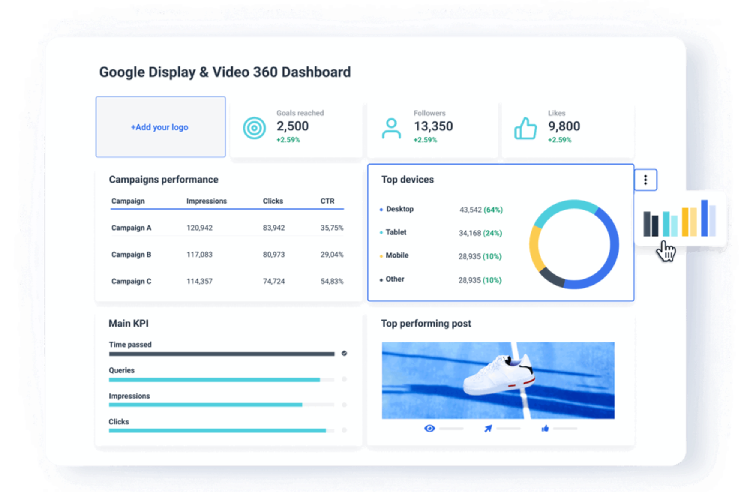
Implementation Roadmap (phased)
- Define Objectives & Benchmarks
Set clear goals, target CPA, ROAS, view-through lift, and establish historical baselines for comparison. - Consolidate Data Feeds
Stream first-party signals (site events, CRM data), ad platform metrics and external context signals into a central analytics layer. - Select and Integrate DSP(s)
Choose one or two AI-enabled DSPs. Configure API connections for bid, creative and inventory controls. - Map Creative Assets
Break down ads into modular components, headlines, images, CTAs, offers, and upload variants to DCO engines. - Train Initial Models
Use historical performance data to train predictive models for bid price, audience value and creative performance. Validate with holdouts. - Set Budget Allocation Rules
Define reinforcement learning parameters, exploration vs exploitation balance, safety caps, attribution windows. - Launch Controlled Tests
Run small-scale campaigns with AI automation enabled, holding 10–20% spend in manual-bid control groups to measure lift. - Iterate and Scale
Analyse incremental lift, refine model features (add new signals or enrichers), ramp up budgets and expand to additional channels. - Automate Monitoring & Alerts
Configure real-time dashboards and anomaly detectors for performance dips, overspend or inventory changes. - Govern and Document
Maintain audit trails of model versions, bidding decisions and campaign overrides. Review compliance with privacy and brand safety policies regularly.
Measurement and KPIs
- Cost Per Acquisition (CPA) and Return on Ad Spend (ROAS) by channel and campaign.
- Incremental conversions measured via holdout groups or geo-split tests.
- Click-Through Rate (CTR) and View-Through Rate (VTR) for display and video.
- Budget reallocation effectiveness: percentage of spend shifted to top-performers.
- Model accuracy: prediction vs actual CPA and conversion volume.
- Invalid Traffic (IVT) and viewability rates to quantify fraud reduction.
- Time saved on manual bid and creative management tasks.
Always combine causal lift measurement with operational metrics to validate AI impact.
Governance, Privacy and Compliance
- Obtain user consent for cookie-based and server-to-server tracking.
- Respect attribution windows and de-duplication rules to avoid double counting.
- Implement brand safety segments and content exclusion lists in DSPs.
- Store bidding logs and decision rationales for audit and explainability.
- Ensure compliance with local data rules, GDPR, CCPA, TCF 2.2, and DSP certification standards.
Common Difficulties and How to Avoid Them
- Insufficient holdouts: without proper controls, you can’t prove incremental gain.
- Overfitting models: avoid hyper-complex features that perform poorly out of sample.
- Ignoring creative fatigue: rotate assets and let AI flag underperformers.
- Fragmented budgets: centralise optimisation rather than siloing by channel for cohesive bidding.
- Poor data quality: dirty or delayed conversion data misleads bid models—ensure timely, accurate feeds.
- Under-monitoring: set alerts for model drift, sudden CPA spikes or budget underspend.
Final Thoughts
AI for programmatic ad campaign optimisation turns paid media into a self-learning system that reallocates budgets, tests creative variants and targets audiences in real time.
By defining clear objectives, consolidating data, running controlled holdouts and iterating on model features, you can unlock higher ROAS, lower CPA and scale campaigns globally with minimal manual intervention.
In 2025, the most successful advertisers will be those who trust AI to handle the complexity of auctions while they focus on strategic creative and messaging.
